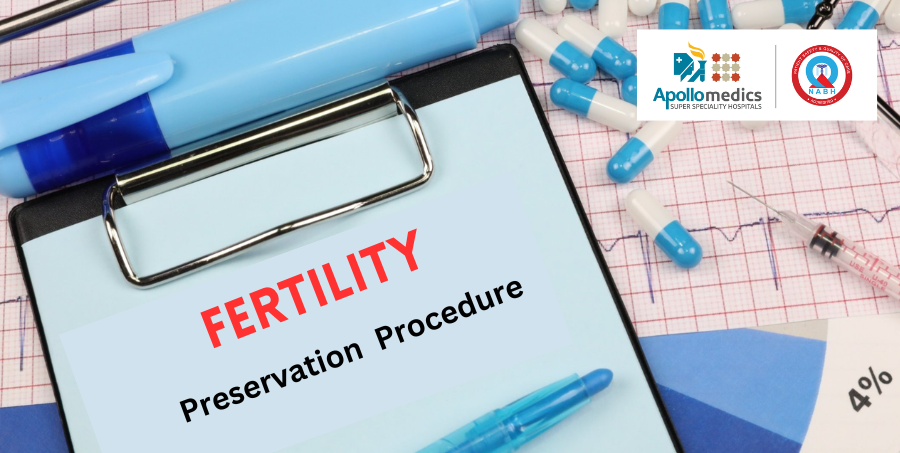What is fertility preservation?
Fertility preservation is the process of saving eggs, sperm, or reproductive tissue, to help bear a child in the future.
Medically indicated fertility preservation:
Certain diseases or conditions can risk one’s future fertility. Fertility preservation done in such a case is called medically indicated fertility preservation.
Who can opt for it-
- Those undergoing treatment for cancer
- Undergoing treatment for debilitating conditions like an autoimmune disease like SLE
- Diagnosed with endometriosis
- With a genetic disease that can affect fertility potential
- Those exposed to toxic chemicals in the workplace
Elective fertility preservation.
Aging is a natural process that occurs in all women leading to deterioration in reproductive potential and menopause.
Men also with advancing age typically after 40 yrs, experience a decrease in sperm count and motility, which can affect fertility potential.
Even assisted reproductive techniques like IVF are less effective as age advances.
If one wants to delay childbearing, one can preserve his/her fertility because studies show aging affects fertility. Many people today delay marriage or married couples wait to start a family until they are more established in their careers.
Through fertility preservation, this is possible now. This is called elective fertility preservation.
Any other way to preserve fertility:
As mentioned above, age-related decline in fertility potential can be expected both in males and females.
Following a healthy lifestyle like eating a nutritious diet, regular exercise, and avoiding stress, substance abuse, smoking or alcohol consumption are good ways, though not sure-shot, to maintain fertility health.
So, if you are postponing starting a family for medical or personal reasons, it is better to go for medical interventions to do the same.
Different options for fertility preservation in women:
Oocyte cryopreservation of oocyte freezing-
Here a woman has to go through a process where she is given hormone injections to stimulate egg growth in her ovaries. This process is of around 10-12 days, after which eggs are removed from the ovaries under ultrasound guidance using a needle. This process of egg retrieval is done under light sedation and the patient usually is pain-free post-procedure and discharged from hospital after 3-4 hrs monitoring.
Collected eggs are examined under a microscope and after some process frozen and stored at a definite temperature.
Embryo cryopreservation of embryo freezing-
This is the most common and successful method of fertility preservation. Hereafter the eggs are removed from the ovaries of women (as described above), they are fertilized with sperm from her partner or a donor (if required) in the lab by the process of IVF (In Vitro fertilization) and the embryos are formed. These embryos are frozen and stored for future use.
Ovarian tissue cryopreservation or freezing-
This modality still remains experimental and is mainly for young women or girls who have to undergo treatment for cancer such as surgery, radiation therapy, or chemotherapy which has a high likelihood of decreasing fertility.
This process is performed by laparoscopy, under general anesthesia. Here 2-3 small incisions are made on the abdomen of the patient and the scope is introduced inside the abdomen. Using specific instruments, the egg-producing portion of the ovary – the ovarian cortex is removed, frozen, and stored.
The tissue can be transplanted even years later to make pregnancy possible.
After the procedure, the patient is usually discharged from the hospital after 3-4 hrs of monitoring and with specific instructions.
Fertility preservation option in men-
Sperm cryopreservation or freezing-
Here a male provides samples of semen which are analyzed and then frozen and stored for future use.
The process is simple and non-invasive and just requires the giving of the semen sample.
Ques. Any risk of fertility preservation procedure-
Usually, the procedure is very safe but rarely due to ovarian stimulation a woman can have ovarian hyperstimulation syndrome.
The success rate of fertility preservation:
Nowadays the technique used for the process of cryopreservation or freezing of eggs, sperm, or embryos is very advanced (Vitrification technique) and efficient. The eggs, sperms, or embryos can remain frozen for a very long time ( up to ten years) without deterioration in quality and we can get a good post-thawing survival rate.
However, fertility preservation procedures don’t guarantee a pregnancy. Success largely depends on health, age, and certain treatment-related factors which vary from patient to patient.
Written By




